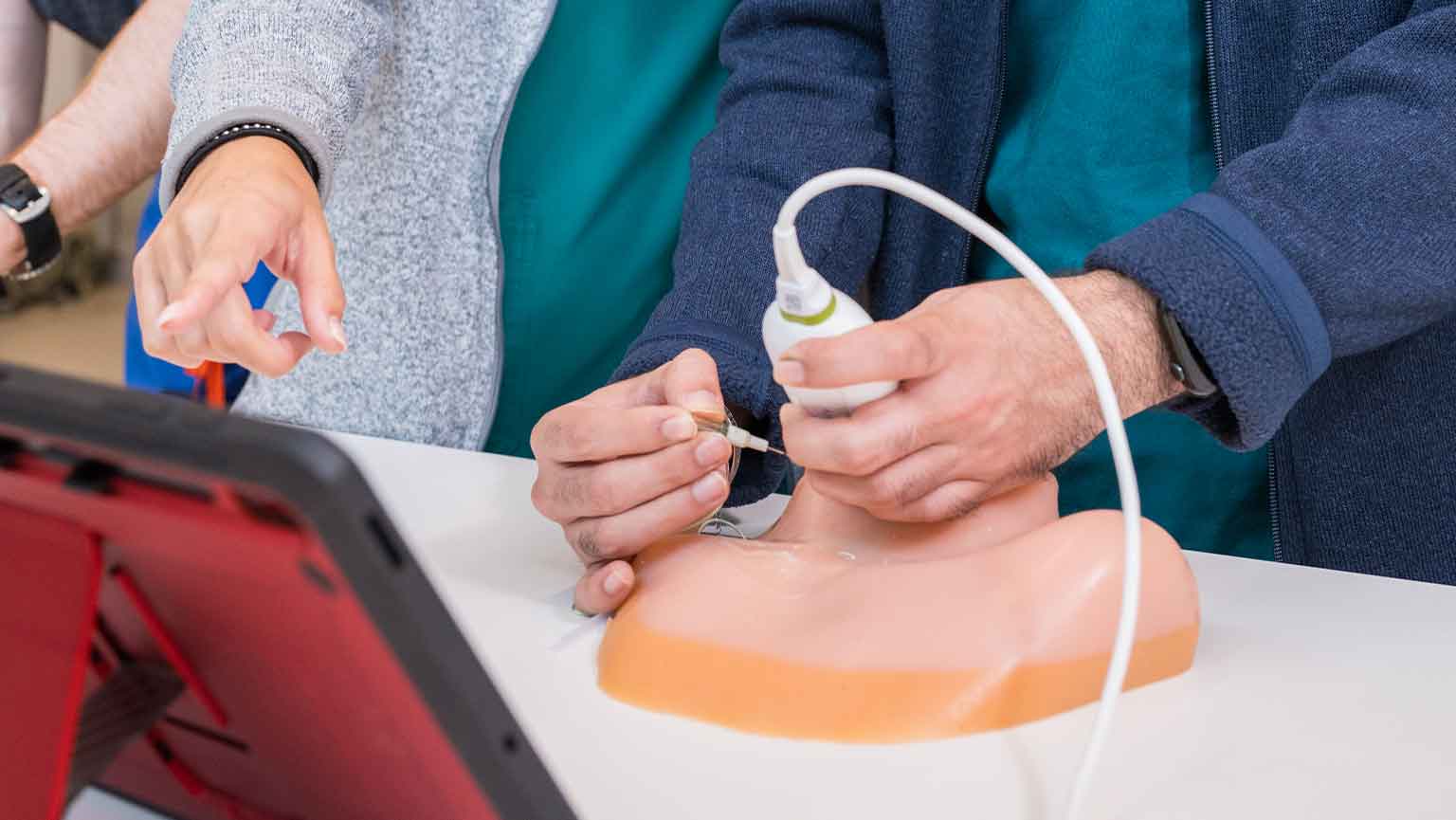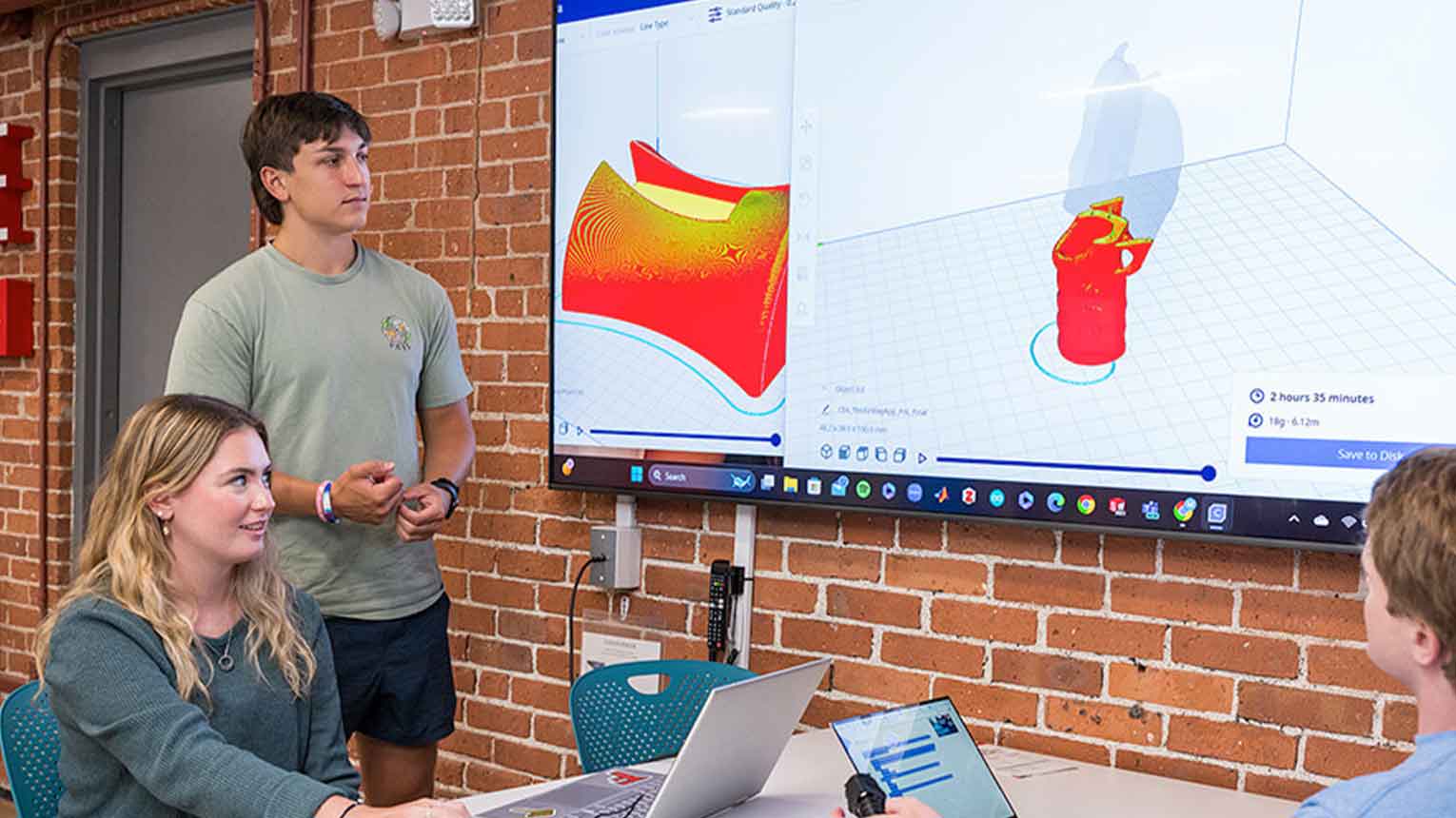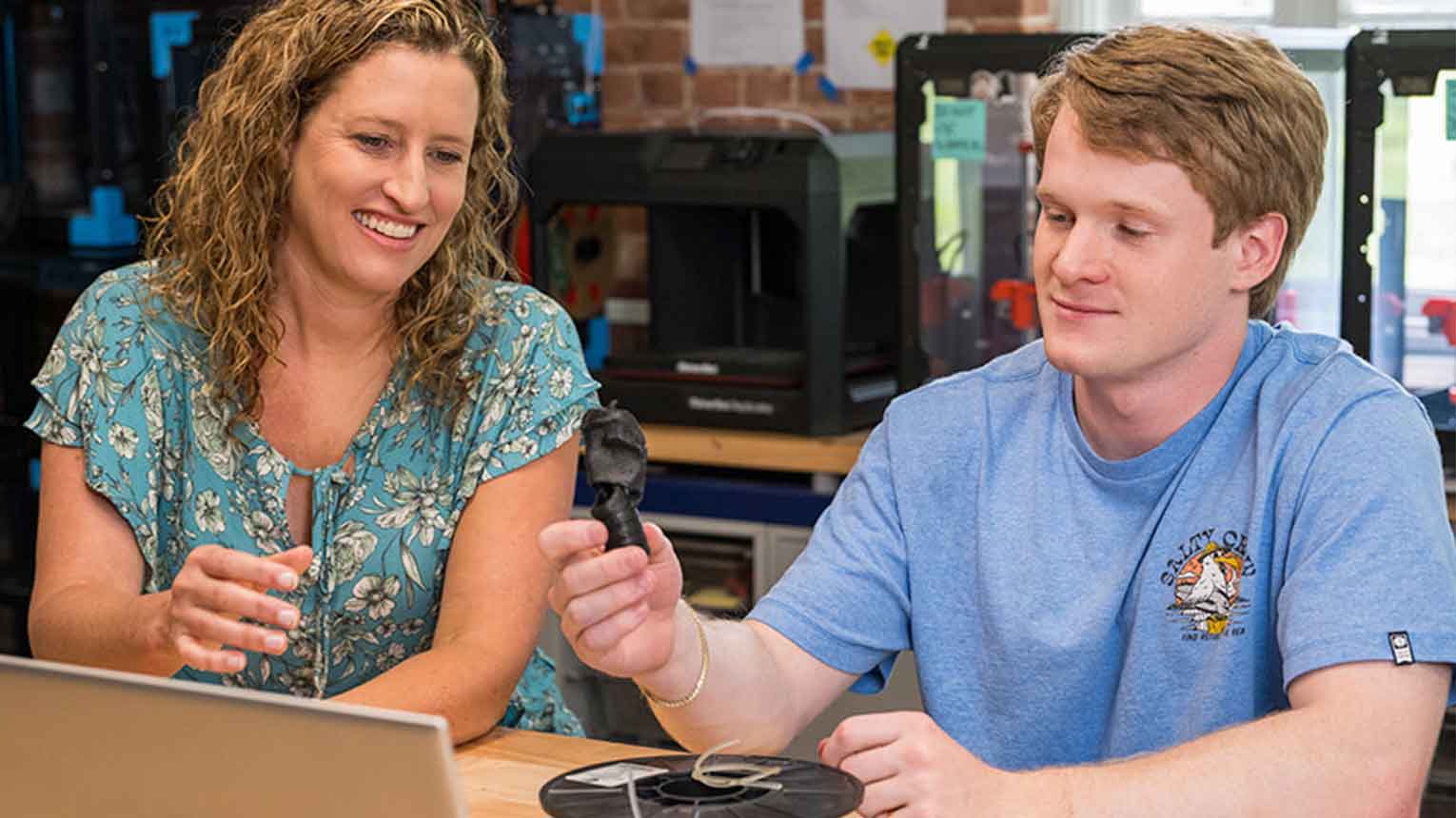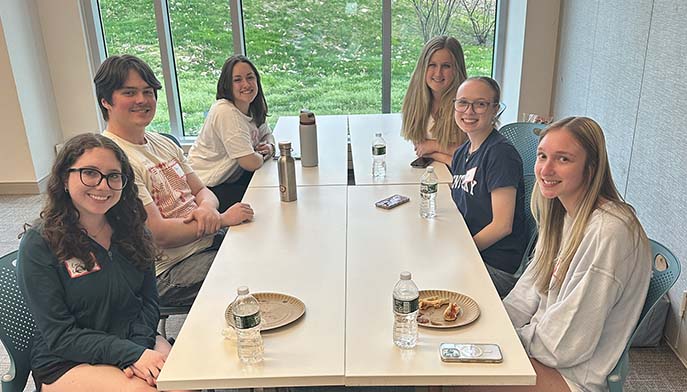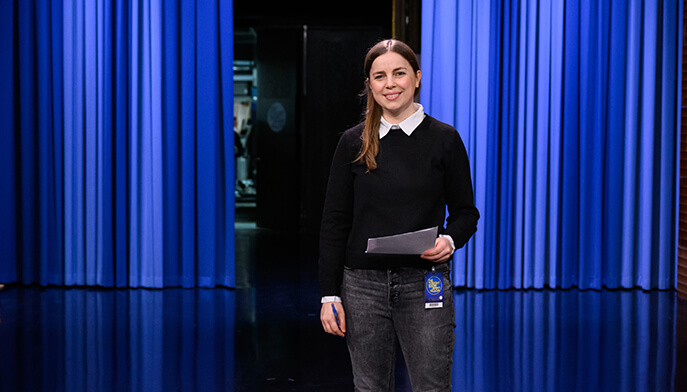“From a faculty perspective, it was rewarding to see the students’ learning evolve as they went through the design process,” said Dr. Freudzon.
Custom-built in the School of Engineering and Computing’s Innovation Annex, the silicone necks were designed as a senior capstone project by Emma Crowley ’24, Julia Kilroy ’24, Ryan Baker ’24, and Wilson Kaznoski ’24. They are known as ultrasound phantom models and take roughly 12 hours each to make. Ultrasound phantoms are essential tools for simulation, providing a “stand-in” for real human tissue that can be scanned or imaged. The bioengineering team’s reusable, low-cost phantom devices have proven to be indispensable models for nurse anesthesia students to practice their skills on.
“The silicone neck aids us in performing upper extremity regional blocks and allows us to practice our ultrasound skills while also attempting to provide us with realistic human anatomy,” said Steven Santiago, a nurse anesthesia student in the DNP program. “The collaboration between our two programs not only helps hone our clinical skills, but also allows us to help the engineering students by providing feedback on their project.”
A big challenge for the biomedical engineering students came when choosing the right type of silicone to best imitate human skin. If the silicone is too stiff, the nurse anesthesia residents are not able to maneuver the needle. If the silicone is too soft, the material will crack from repeated use, resulting in puncture pathways that inhibit the residents’ ability to locate nerves independently. Additionally, the type of silicone used impacts how the needle and neck structures appear on the ultrasound.
Through a trial-and-error design process, the biomedical engineers overcame obstacles such as the silicone not curing properly and the 3D-printed nerve network and collarbone appearing fuzzy on the ultrasound.
“I’m a biomedical engineering major, but I’m also a pre-physician’s assistant,” noted Emma Crowley, “so being able to meet with the nursing students and professors to learn how the procedure is done and to get feedback was helpful.”
Reflecting on the many tweaks and improvements made during the design phase, she noted, “My anatomy class also helped me understand how to improve the design of the mold and what it needed to look like on the ultrasound.”
The seniors presented their capstone project, titled “Ultrasound Phantom for Regional Anesthesia,” and won first place in the student poster session of the 2024 ASEE (American Society of Electrical Engineers) Northeast Conference, which drew a record breaking attendance and was hosted by Fairfield University in April.
